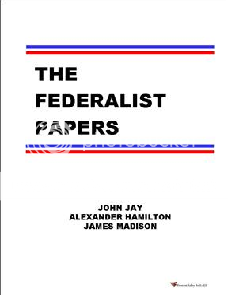ObamaLegacyPart7 <– PDF
President Donald Trump recently withdrew the U. S. from the Paris Climate Accord, signed by President Obama. It was one of Mr. Obama’s foreign policies based on fundamental lies about the earth’s climate, one designed to ultimately transfer total governance of your life to government bureaucrats. The Paris Climate Accord was intended to reduce total carbon emissions by 2030, although Communist China and India, the two greatest polluters, were exempt. It is worse than that: the entire agreement is voluntary on the part of all the signatories. Now, if the various national signatories believed that climate change is man-made, and that we are all at risk of extinction if something isn’t done, why aren’t the emission reduction targets mandatory? Because the wealthy and powerful know that man-made climate change is a hoax. Even if the provisions were mandatory, and even if they are met, the net impact for the next 100 years was estimated to be about 0.2 degrees K, hardly worth the trouble. But, if the signatories are dumb enough to follow through on the reductions, there may be a significant impact to many peoples’ standard of living: at minimum, an increase in energy costs that would otherwise have been devoted to other needs and desires.
The activists clamoring for emission controls want you to believe that the recent warming of the earth’s temperatures has never occurred before. They are in effect demanding that you ignore all the history of the “little ice age” that occurred in the Northern Hemisphere from about 1350 to 1750 AD. During that time the earth was somewhat colder than it is now; in fact the earth was warmer than it is now during the period from about 750 to 1350 AD. Consider for example the history of Greenland. It was discovered by the Norwegian explorer Eirik the Red in 981. He stayed there, in a place called Snaefell (location unknown), then returned to Iceland, where he convinced a group of people to emigrate to Greenland. He called it Greenland, so the story goes, to give the illusion of a warm place where agriculture would pros-per. It was in fact, warmer than it is now. They eventually created two settlements, one in a place called Brattahlid (near present-day Qassiarsuk) and one called Godthaab (near present-day Nuuk). The historian Knut Gjerset [1] explains the early history as follows:
In spite of the cold climate and the dangers connected with navigation in these northern seas the colonies continued to grow until the Eastern Settlement [Brattahlid] had 190 farmsteads, twelve churches and two monasteries. The Western Settlement [Godthaab] had ninety dwellings and four churches. Together the two settlements probably had at the time of their greatest prosperity about 2000 people. The settlers found no native inhabitants in Greenland, though numerous traces of human habitation convinced them that the country was inhabited. The old Icelandic historian Ari Frodi says: “They found remnants of human dwellings both eastward and westward in the land, stone weapons and fragments of boats, from which it was evident that the same people who inhabit Vinland, and whom the people of Greenland call Skraelings, had also sojourned there”. But the Skraelings, or Eskimos, who inhabited this region must have moved to other hunting grounds, as they did not return until a later period. The climate and general conditions in Greenland were found to be much the same as in Iceland. The winters are long and cold, and the sea is usually strewed with icebergs even late in spring, but in the summer a green belt of vegetation stretches along the western coast. During this season of the year the weather is agreeable and the scenery is beautiful. No woods exist, but there is an abundance of grass, flowers, berries, and brush of dwarfed birch trees. The clear air and blue fjords, the glaciers and snow-covered mountains give the region in summer time a serene and tranquil beauty equal to that of any region in the far North. Fish are found in great abundance in the streams as well as in the sea; and seals, walrus, polar bears and furbearing animals are plentiful. Cattle, sheep, goats and horses thrived well and were kept in goodly numbers by the settlers. For want of other building material the houses were erected of stone, and as the dwellings were usually structures of considerable size, with separate stables for sheep, horses and cattle, many remnants are still to be seen in Greenland of the buildings erected by the early settlers. In the Eastern Settlement the ruins of several churches and of about one hundred dwellings have been found.
So, prior to year 981 AD, Greenland had become too warm for the Eskimos, who moved north. Greenland was warm enough to support grazing by cattle, horses, and sheep. The colonists disappeared by about 1450; the most common explanation is the reduction of trade with Norway, the Black Death of 1349, and the return of the Eskimos when the little ice age set in, who absorbed the few remaining colonists. Thus we learn that the global temperature changes occur in long protracted cycles spanning several centuries, and man has little, if anything to do with it. The warming from 750 to 1350 was certainly not caused by man’s industrial pollutants, as those did not begin to appear until about 1700.
The Paris Climate Accord is typical of Mr. Obama’s foreign policies: anything to appease the screeching activists, even if the entire theory is false, and anything to create an excuse to reduce America’s position in the global economy.
[1] Knut Gjerset, History of Iceland, New York: The Macmillan Company, 1925, pp. 95, 96



